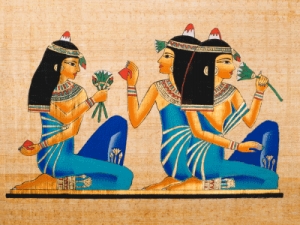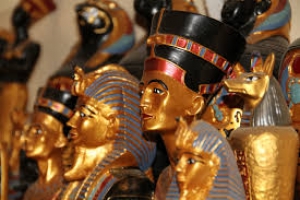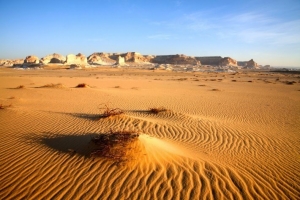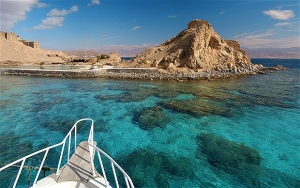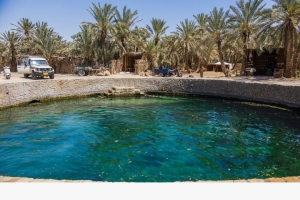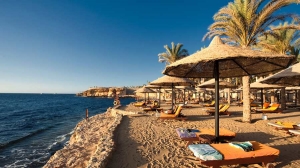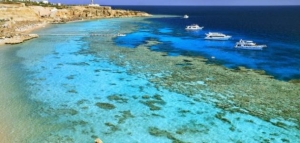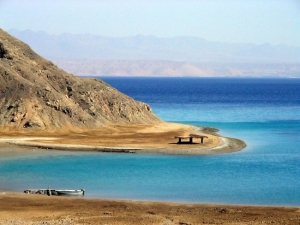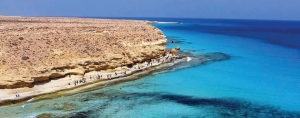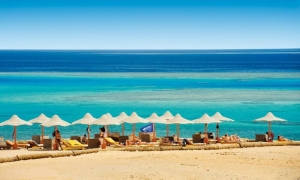+2 0122-345-3028
This email address is being protected from spambots. You need JavaScript enabled to view it.
Super User
Entertainment in Egypt
Entertainment in Egypt
There is a lot to do for the foreign traveler in Egypt. Apart from visiting and seeing the ancient temples and artifacts of ancient Egypt, there is also much to see within each city. In fact, each city in Egypt has its own charm of things to see with its own history, culture, activities, and people who often differ in nature from people of other parts of Egypt. Cairo, for instance has so much to do and see. Besides the ancient Egyptian history, there is the history of Romans, Greeks, Byzantine Empire, Islamic empire, Ottomans, and finally modern Egyptian history.
Jewish and Christian History To see more about Egypt's Christian and Jewish history, go to a local tourist office and ask them to give you names of local Churches and Jewish Synagogues. There is at least two Jewish synagogues dating back many years ago, when Egypt had a population of a few hundred-thousand Jews in the country, who eventually left during the formation of Israel.
There is a lot of old and interesting Churches to see in different areas of Cairo, including downtown Cairo, Heliopolis, Korba, Shubra, Abbasiya, Zamalek, and Maadi. Some of these churches have been around for several hundred years and their architecture resemble that of Churches in Western countries, often built by Europeans who built much of the city's architecture in the 19th century as a resemblance to modern buildings of Europe at the time.
Modern Cairo If you want to see modern Cairo, try walking in the streets of Zamalek, Maadi, Mohandiseen, or Heliopolis where you will see some of the more modern buildings and get to experience the way of life in Egypt.Cairo Tower is the tallest building in Egypt, and you can go up the tower and have a nice dinner with a full view of Cairo from above. There are telescopes which enable you to see magnified sections of city in more detail and allows the traveler to see much of the city in a short amount of time.
Local Cafes/Coffee shops and Restaurants For social times, try sitting in one of the local cafes restaurants where you can meet and interact with fellow Egyptians. There are numerous coffee shops/cafes and restaurants all over Cairo all catering for different tastes and backgrounds and range from the very budget to the very expensive. Local chains include, Coffee Roastery, Cilantro, Grand Cafe, Costa Coffee and many other places. Generally each area of Cairo has its cafes and restaurants.
Sporting and Recreational Clubs: If the heat is too much, you can go to one of the famous sporting clubs such as the Gezira Club located in Zamalek, or the Seid Club (otherwise known in English as the Shooting Club) located in Mohandiseen, where you can have a dip at the swimming pool or otherwise enjoy sitting in the shade and comfort of lush trees and gardens. Entrance for foreigners can be gained by buying a one-day ticket for 20-30 Egyptian pounds which enables the person to enjoy all the facilities of club including playing any sports. There are of course changing facilities and restaurants inside the club where one can enjoy a meal or a drink after engaging in any activity.
Nightlife: If you enjoy nightlife, there is quite a few nightclubs and discos where you can drink and dance to some of the most modern tunes in the west as well as listen to some arabic music. The music varies from Dance and Trance to Hip Hop, Rap, Techno, as well as Rock and Pop. These clubs are usually located inside five-star hotels or at areas such as Mohandiseen and Zamalek.
Examples include: The Cairo Jazz Club (mohandiseen) Purple (on a boat in Zamalek) Hard Rock Cafe (inside the Four Seaons Hotel in Garden City) L'Obergine (pub and bar in Zamalek)
Desert Adventures: For other adventures, try going to the Haram District of Cairo, and look for any horse-riding stables. There, you can rent a horse for a few horse and ride, or even ride a camel out in the desert by the pyramids and the Sphinx. The best time to do this is at night when you can see all the stars shining together in the sky and capture the magical feeling of the place. You will be with a local guide riding with you on another horse or camel, or you might even be joined a group of other individuals or groups of friends who enjoy riding horses in the desert by the pyramids like yourself.
Nile Boat: Try rending out a Felucca boat (small boat that can carry up to 20 individuals) in the Nile of Cairo. There you can experience the beauty of the Nile and the surround scenery, where you can see the city and its buildings and streets from within the water around. Depending on the weather, you can do this either day or night, but you will need to go to the Giza District and walk along the corniche area of the Nile and ask any of the locals for renting this boat.
Islamic Cairo/Fatimid Cairo: For those interested in the Islamic architecture and history, try going to Islamic Cairo, ( el Gamalaya district or Khan El Khalili. There you will see numerous buildings and some mosques and see how buildings and houses were built in the Islamic Era of Egypt. There is also a Souk or (Bazar) where you can buy lots of different souvenirs and items.
Egypt Culture and Traditional
Egypt Culture and Traditional
Egypt is a country with an immense cultural mix, In every major city in Egypt you will find traditions that remain from the time of the Pharaohs, and in other parts you will find pure tribal customs that were brought in by many invaders throughout the centuries. That contradiction and contrast between areas of Egypt, when you compare it with other Middle Eastern countries, is what makes Egypt seem advanced against some of the others. Yet here you will find that the customs and mentality tends to be full of warmth towards visitors and foreigners. I guess this could be the secret why Egypt is considered the most attractive country in the region for travellers. The pure nature of the local Egyptians when they are always there when you need help, or when they invite you into their houses when they hardly know you, or when they smile in your face, makes a visit to Egypt a wonderful and unforgettable experience.
Egypt’s population is about 94 million. 80 million of them are Sunni Muslims and about 10 Million are Coptic Christians (Christian Egyptians), although public statistics indicate that they are not more than 7 million. Whether Muslim or Copt, the Egyptians are moderately religious and religious principles are quite noticeable in their daily lives. Here each family member is responsible for the integrity of his or her family and for the behavior of other members, creating an environment that would be envied by many people in the West. Here they are very close to each other, family ties are far stronger than in the west, and that is why you will find any major city in Egypt is a lot safer than any western metropolis.
Yet when travellers come to Egypt they are often apprehensive, their views of Egyptians and Arabs, fomented by unkind and untrue media stories, often bear no relation to reality. Travelers, when they meet Egyptians are often surprised by their friendly, hospitable reception and take home with them good feelings about Egypt and its population.
Egyptians form a society of a mixture of Middle Eastern family standards, taken from the different religious rules, whether in Islam or Christianity, it creates a sort of background that can color their decision-making in a way difficult for foreigners to understand, yet it is precisely this training that makes Egyptians some of the most charming and helpful of hosts. By understanding the culture and with consideration for your hosts, you can be a welcome guest in Egypt.
In general, Egyptians are most accommodating and they will go out of their way to help you and respond to any questions you have. Most Egyptians require little personal space and will stand within inches of you to talk! You will find that whenever you start talking with an Egyptian, you will inevitably draw a crowd, and often the Egyptians will start discussing, among themselves, about the correct answer to a question.
Although most of the Muslims in Egypt do not drink alcohol they don't object to others drinking, but doing it in reasonable amounts. In Egypt people don't eat pork, and rarely, when you find a place that offers pork, is there much choice on the menu.
People here fast at the time of Ramadan, it is the time when they all come close to each other and respect each other, it is the time when they go out till late at night and fast by day. During this month, donations, almsgiving and charity would be at its highest rates, it is the time for forgiveness and love. It is a wonderful month.
Western Desert
Western Desert
The Western Desert covers 681,000 square kilometers over two-thirds of Egypt’s total area. It is merely one part of the Sahara belt across northern Africa.
Only feasible for tourists since the 1980s, the Western Desert Circuit is one of the finest journeys Egypt offers. Starting from Cairo or Luxor, it runs for over 1000 km through a desert landscape pockmarked by dunes and lofty escarpments. En route, amid wind-eroded depressions, four oasis are sustained: Bahariya, Farafra, Dakhla and Kharga
Unlike Siwa, these :inner oasis “ have been almost continuously under the control of the Nile Valley since the Middle Kingdom, ruled by the Pharaohs, Persians, Romans, Mamelukes and Turks, who have their mark in the form of temples, tombs, forts, mosques or roads.
Although each oasis has a central focus, the differences between them are as marked as their similarities.
Bahareya and Farafra both score highly on their hot springs and palm groves, but Bahareya seems corrupted by Cairene ways and tourism, whereas Farafra is more rural and traditional.
In Dakhla and Kharga the modern centers are less appealing than the ancient ruins and villages on their periphery, redolent of historic links with the Nile Valley or caravan routes from the Sudan.
Staying overnight in the haunting White Desert between Bahariya and Farafra is a must.
Siwa Oasis lies far out near the Libyan border. Its people speak another language and have customs unknown in the rest of Egypt. Its ruined citadels, lush palm groves, limpid pools and golden sand dunes epitomize the allure of the oasis.
Much nearer to Cairo are two quasi-oases: Fayom and Wadi Natroun. The Fayoum is more akin to the Nile Valley than the Western Desert, which many ancient ruins to prove its importance since the Middle Kingdom. Wadi Natroun is significant mainly for its Coptic monasteries
Taba
TABA
At the extremity of Egypt’s international borders, overlooking Aqaba Gulf lies Taba some 70 km from Nuweba.
It boasts a most exquisite panorama of sea and mountains.
The region is distinguished by its fascinating natural beauty, clear blue water and abundance of bays which are considered among the landmarks of this tourist region.
There is also an international airport and lodging facilities.
With its five star hotels, Taba is a meeting of borders.
It overlooks Jordan, Israel and Saudi Arabia, and Egypt has major plans for this area as a tourism center.
It currently has good restaurants and beaches cafés, and the border can be crossed on foot, with bus service into Eilat.
Siwa
Siwa
Siwa is located 50 Km East of the Libyan bored. It is known in Ptolemaic times as the White Harbor and has a long With a population of about 23,000, Siwa, the most inaccessible of all Egypt's oasis until very recently, is also one of the most fascinating, lying some 60 feed below sea level.
The area has a nice climate, chilly in winter, hot in the summer and moderate in the spring and autumn. To the west of the town lies the Siwa Lake which is a large, saltwater lake. The area is also famous for its springs, of which there are approximately 1,000. The water is sweet, and is said to have medical properties. The area is also famous for its olives, and is one of the most beautiful landscapes in Egypt. Olives oil is still made in the area by crushing the olives from the 70,000 olive trees in the area with stones. In fact, the area is also well known for its crafts, particularly woven cloth, which is unique in Egypt.
Siwa, like the other Western Oasis, has had a number of different names over the millenniums. It was called Santariya by the ancient Arabs, as well as the Oasis of Jupiter-Amun, Marmaricus Hammon, the Field of Palm Trees and Santar by the ancient Egyptians.
We believe it was occupied as early as Paleolithic and Neolithic times, and some believe it was the capital of an ancient kingdom. During Egypt's Old Kingdom, it was a part of Tehenu, the Olive Land.
In many respects, the Siwa Oasis has little in common with the other Western Oasis. The Siwan people are mostly Berbers, the true Western Desert indigenous people, who once roamed the North African coast between Tunisia and Morocco. They inhabited the area as early as 10,000 BC, first moving towards the coast, but later inland as other conquering invaders arrived.
In fact, there is almost nothing known of the Siwa Oasis during Egypt's ancient history. There have been no monuments discovered dating from the Old, Middle or New Kingdoms. It may have been colonized during the reign of Ramesses III, but evidence only exists beginning with the 26th Dynasty that it was part of the Egyptian empire. It was then that the Gebel el-Mawta Necropolis was established, which was in use through the Roman Period. Some sources maintain that it remained an independent Sheikhdom ruled by a Libyan tribal chief until Roman times. The two temples that we know of, both dedicated to Amun, were established by Ahmose II and Nectanebo II.
Yet just exactly how integrated it was in the Egyptian realm is questionable. One of the most notable and interesting stories in Egyptian history involves Cambyses II, who apparently had problems with the Oasis. He sent an army to the Oasis in order to seize control, but the entire caravan was lost to the desert, never arriving at Siwa. To this day, the event remains a mystery, though tantalizing clues seem to be popping up.
It was the Greeks who made the Siwa Oasis notable. After having established themselves in Cyrene (in modern Libya) they discovered and popularized the Oracle of Amun located in the Siwa Oasis, and at least one of the greatest stories told of the Oasis concerns the visit by Alexander the Great to the Oracle.
[Almost immediately after taking Egypt from the Persians and establishing Alexandria, Alexander the Great headed for the Siwa Oasis to consult the now famous Oracle of Amun. This trip, made with a few comrades, is well documented. He was not the first to experience problems in the desert, as whole armies before him had been lost in the sand. The caravan got lost, ran out of water and was even caught up in an unusual rainstorm. However, upon arrival at the Oasis and the Oracle of Amun, Alexander was pronounced a god, an endorsement required for legitimate rule of the country.
Cleopatra VII may have also visited this Oasis to consult with the Oracle, as well as perhaps bath in the spring that now bears her name. However, by the Roman period, Augustus sent political prisoners to the Siwa so it too, like the other desert oasis, became a place of banishment.
Christianity would have had a difficult time establishing itself in this Oasis, and most sources agree that it did not. However, Bayle St. John says that in fact the Temple of the Oracle was actually turned into the Church of the Virgin Mary. The Romans used to banish church leaders to the Western Oasis and to Siwa.
By 708 AD, Islam came to the Oasis , the army of which was several times defeated by the Siwans . It was probably not until 1150 AD that Islam finally took hold in the Siwa Oasis.
However, by 1203 we are told that the population of the Siwa Oasis had declined to as low as 40 men from seven families due to constant attacks and particularly after a rather viscous Bedouin assault. In order to found a more secure settlement, they moved from the ancient town of Aghurmi and established the present city called Shali, which simply means town. This new fortified town was built with only three gates.
One of the main historical references we have on the Siwa Oasis is called the "Siwan Manuscript" which was written during the middle ages and serves as a local history book. It tells us of a benevolent man who arrived in the Oasis and planted an orchard. Afterward, he went to Mecca and brought back thirsty Arabs and Berbers to live in the Oasis, where he established himself, along with his followers in the western part of Shali.
Unfortunately, there seems to have almost immediately been problems between the original inhabitants, who were later known as the Easterners, and the new families “western families” who to this day are proud to be described as "The Thirty". The conflicts between the two sides became legendary, and sometimes rose into short, but intense violence.
Obviously, if the Siwans could not get along with each other, they surely had trouble accepting outsiders.
When, in 1819, Mohammed Ali, the founder of modern Egypt, began his conquest of the Western Oasis, he sent around 1,300 troops to the Siwa Oasis .The ensuing battle lasted for three hours, but the Siwans this time were no match for modern artillery. They had to yield to this superior force. By about 1834, The Siwa Oasis was considered to be safe for travel.
During the two world wars considerable problems were caused for the Oasis. The Siwa was really caught up between opposing forces during World War I. Now, the Siwans found themselves in the middle of the Italians and the British
During the remainder of the war, the Siwa became a tourist attraction .This was the beginning of real tourism to the Oasis, and visitors had their choice between a nine day tour by rail and coach from Mersa Matruh or a month long camel safari that connected with the Wadi Natrun and the Qattara Depression.
During World War II, Siwa again played an important role. Most of that war saw the Siwa occupied with Allied troops consisting mainly of British, Australians and New Zealanders. It was closed to none military visitors. However, it was bombed by the Italians who had occupied Libya, Afterwards, visitation to the Siwa was restricted for a number of years.
Today, the Siwa, while not a heavily trafficked tourist destination, welcomes those that it receives.
Siwans have their own culture and customs and they speak a Berber language, called Siwi, rather than Arabic. Interestingly, each October there is a three-day festival during which Siwans must settle all of their past year's disputes.
Sharm El Sheikh
Sharm El Sheikh
The simplicity of sun, sea and sand. The luxury of five-star hotels, water sports, shopping and entertainment.
This is Sharm el-Sheikh, one of the most accessible and developed tourist resort communities on the Sinai peninsula, All around are Bedouins, colorful tents, mountains and sea.
There are small, intimate hotels with modern designs, as well as larger hotel complexes belonging to International chains, plus about all the amenities one could expect of a tourist center, including casinos, discos and nightclubs, golf courses and health facilities.
In fact, with diving and snorkeling, windsurfing and other water sports, horses and camel riding, desert safaris, and great nearby antiquities attractions, it is almost impossible for a visitor to ever suffer from boredom.
Four miles south the southern section of the town stands on a cliff overlooking the port,and is a great view. Na'ama Beach is one of the center of the tourist activities.
Located just north of Sharm, this area is developing into a resort town of its own
Most hotels at Na'ama Bay have their own, private beaches with comfortable amenities such as chairs, shades and even bars.
Shark's Bay is also nearby, and again is a growing resort community with more and more to offer, along with several diving centers.
The small harbor known as Sharm el-Moiya is located next to the civil harbor, has accommodations for boats, and includes a Yacht Club with rooms.
For those who live to shop, the Sharm El-Sheikh mall provides shops with both foreign and local products, including jewelry, leather goods, clothing, pottery and books.
It has been said that this is a must visit for all diving enthusiasts.
There are many diving sites along the 10 mile beach between Sharm el-Sheikh and Ras Nusrani.
Safaga
Safaga
Safaga, or Port Safaga (Bur Safaga) lies 65 km south of Hurghada . It is a working port located 37 miles from Safaga with several tourist villages specializing in diving holidays, a handful of hotels and some excellent fish restaurants. Its unspoiled beaches and stiff breezes made it the ideal venue for the 1993 World Windsurfing Championships.
Day trips to Tobia Island or Mons Claudianus in the Red Sea Mountains can be arranged with local guides.
Safaga City is considered as one of the most important therapeutic tourist centers as special medical researches have proved the potential of attracting international tourism to Safaga. It combines treatment , by sea water, coral reef mud, sun rays, sand, sulphur water and mine dust.
It heals psoriasis.
The most important diving places are:
Ras Abu Soma, Tobia Arba, Tobia Kebira, Tobia Soraya, Gamul Soghira, Panorama Reef, Middle Reef, Abu Gafan, Shaab Shear, Wreck of Salem Express.
Nuweiba
Nuweiba
Nuweiba, which means "bubbling springs" in Arabic, is a 7-km long town stretched along the Aqaba coast of the Sinai Red Sea about 87 km from Dahab. Developed from a barren isolated place with no infrastructure into a promising and attractive tourist destination, Nuweiba has just recently been discovered by tourist investors who have established hotels along the coastline south and north of Nuweiba, connecting it with Taba in the north and Dahab in the south
Due to the problems in Israel, tourism to the area is now down. This is not because of any danger within the area. Rather it is due to the fact that Israelis once made up a significant segment of the tourist population to the area and are no longer traveling as much because of their own internal conflict. This really ends up being a bonanza for other travelers to the area who are seeking a laid back, non-congested beach or scuba diving vacation. Vacation specials abound, and the local tourism industry is working hard to promote the area to new markets.
Nuweiba can be divided into three main sections and runs for some ways along the beach. The three areas consist of the port of Noweiba which has become fairly busy these days, Noweiba City which has a bazaar and tourist shops, and Tarabin which is the real party area of the area
Nuweiba Tarabin, the northern part, consists of a thick grove of palms, a shallow bay and the ruins of a Turkish fort. The well inside the ruins has served the Bedouins as a fresh water source for centuries. In the early 80’s, the process of settling started, when families of the Tarabin tribe who occupy the area north of Nuweiba, permanently moved to live in their summer location. At this time the Bedouins set up the first simple accommodations made of scrap wood and metal, the only material available. With an increase in tourism and an improving infrastructure, soon many campsites and small hotels sprouted like mushrooms along the bay.
Tarabin is known for its lively oriental atmosphere. Restaurant by restaurant and bazaar next to bazaar gives you the impression of a colorful oriental market place. Along the beach you find lively outdoor restaurants in Bedouin style furnished with carpets and cushions that invite you to lay back and relax and let the time pass by.
The town itself is built around the former Moshav Neviot, which was established during the Israeli occupation in 1971. Its significance lies in marking the tribal boundary between the Tarabin tribe in the north and the Muzeina tribe in the south.
The Dunes are the extension and connection between Nuweiba Town and Nuweiba Muzeina (Nuweiba Port). Along the shore exist a conglomerate of many camps and small-scale hotels on the beautiful sandy beaches with spectacular coral reefs just in front of them. The Dunes are divided between "Duna" and "small Duna". Most of the campsites and hotels are built in the southern "small Duna", while "Duna" remains a romantic virgin place with simple accommodations of thatched beach bungalows and some small restaurants with brilliant views.
Nuweiba Port, also known as Nuweiba Muzeina, is the industrial area. With the construction of the port in 1985 trade business between Egypt and the Arab countries on the other side of the Gulf of Aqaba increased. A highway was built through the mountains connecting mainland Egypt with the Sinai Peninsula to accommodate this trade.
Egyptians from all over the country came to live in Nuweiba as work flourished. Homes and schools were built, shops and business centers opened and the first hotels were established.
Originally Nuweiba port was the summer location for the Muzeina tribe. It was a sparsely inhabited oasis, which came only into life in the late summer, when the Muzeina flocked to the palm groves to pick dates. The thriving trade encouraged the Muzeina clan to settle. Today, they are running their own businesses by renting out their places as shops or other facilities to the Egyptian newcomers.
Nuweiba is famous for its beautiful beaches covered by Palm trees. All along the Sinai cost you will find good scuba diving, and Noweiba is no exception. Besides the diving, you will also find camel and jeep adventurers. The Colored Canyon is nearby, and a little beyond is the oasis of Ain el-Furtaga. Noweiba also has a daily ferry service to the Jordanian port of Aqaba.
Mersa Matrouh
Mersa Matrouh
Mersa Matrouh lies 290 km. west of Alexandria and 222 km. from Sallum. The distance from Cairo to Matrouh is 524 km. It lies on a bay on the Mediterranean and is distinguished by its seven km.
long beach, which-as all visitors have testified-is one of the most beautiful in the world.
The beach is famous for its white soft sands and calm transparent waters, for the bay is protected from the high seas by a series of rocks forming a natural wave-breaker, with a small opening to allow light vessels in.
This beach dates back to the days of Alexander, the Macedonian, when it was known as "Paraetonium" and also as "Amunia". It said that Alexander the Great stopped there during his historical expedition to pay tribute, and sacrifice, to the god Amun, at Siwa, so that he becomes Amun's son and his rule be a historical continuation of the pharaohs. There are ruins of a temple from the time of Rameses II (1200 B.C.) in Matrouh.
Most important places / beaches for visit
ROMMEL'S HIDEOUT: A cave, hewn in the rock, where Rommel drew up plans of his military operations. It has now been turned into a military museum.
AGEEBAH BEACH: About 28 km. west of Mersa Matrouh, it is distinguished by its numerous natural caves and enchanting scenery
AL-ABYAD BEACH: About 20 km. west of Mersa Matrouh beauty surpasses that of Mersa Matrouh beach
MARINA RUINS-ALAMEIN: An ancient city discovered in 1985, it comprises temples, tombs baths and nobles' houses, from the Graeco-Roman period. It is the largest archaeological city after Alexandria. The British Cemetery Thousands upon thousands of rock-hewn tombstones stand straight rows amidst a fenced garden.
THE GERMAN CEMETERY: It is a fortress like memorial that was built on a high overlooking the sea.
THE ITALIAN CEMETERY: It is a high tower fort standing on a high hill. The walls of the building are covered with marble.
Marsa Alam
Marsa Alam
Many modern guides to Marsa Alam describe it as a fishing village on Egypt's Red Sea coast 132km (82mi) from Al-Quseir. However, with a new international airport, a number of other planed tourism projects and many new hotels, it is rapidly becoming much more than a fishing village.
Marsa Alam sits on the T-junction between the Red Sea coast road and the road from Edfu which sits on the Nile river about 230km (142mi) inland. This road, which was probably originally built by Ptolemy II in the Greek period, passes through some historic landscape where the ancient Egyptians mined much of their gold. Several gold mining operations are known. Just off this road are found two areas, called Wadi Barmiya, and about about 30 kilometers further into the mountains. Wadi Baramiya extends into another larger Wadi named Miya, where a temple was built by, among others, Seti I. Both areas were probably gold mining communities
In addition, a wealth of rock inscriptions from as early as the predynastic period may also be found along this route near Marsa Alam. Here, the smooth rock faces were an ideal canvas for ancient graffiti, which dates from the earliest times right up until the present. The ancient graffiti depicts animals, including giraffes and cattle, but also includes hunting scenes, such as an ostrich hunt with dogs. Unfortunately, with the expansion of this road, many if not all of these inscriptions will be soon lost.
While this road in ancient times was used for the gold mining trade, archaeologists believe its main use was as a trade route between the Nile Valley and the Red Sea where an important ancient port was located.
Today, Marsa Alam remains a fairly small tourist town, but we may expect to see considerable development in the very near future.
The airport is actually part of a larger development project designed to create a state of the art resort area in Port Ghaleb, including both a 1,000 berth marina and port, with a dock-side harbor, yacht club and spa, along with a highly animated town center and a corniche around the marina area. On the corniche will be shops, galleries, boutiques, restaurants and bistros, nightclubs, discos and a casino. in addition there will be a conference centre and a festival hall, a longe with a combined desert and links golf course . the private marina will not only be the largest in the middle East , but an international sea gateway for yachts to visit Egypt .
Located just outside of Marsa Alam, that project is scheduled for completion in 2004, though the marina may open as early as this year. By then, even conservative estimates indicate that some 4,000 hotel rooms will be available in and around Marsa Alam.
Only a short time ago, it would seem that most of the accommodations here were tent camps, but even now, many new, fine hotels have been built. However, for the moment, the primary reason to visit the mainland Red Sea community is for the snorkeling and diving. This whole coast line is one huge reef of exceptional quality with new dive sites being discovered all the time. Dive sites such as Elphinstone Reef (famous for its hammerheads!) can now be dived by day boats from Marsa Alam. It should also be noted that a nature reserve stretches from here to Gebel Elba in the south. The primary dive sites in the area include Shaab Marsa Alam , Shaab Samadai , Daedalus Reef , Shaab Sharm (Gota Sharm) , Abu Galawa , Shaab Maksur, Sataya (Dolphin Reef),Zabargad, Erg Diab and finally Rocky Island .
